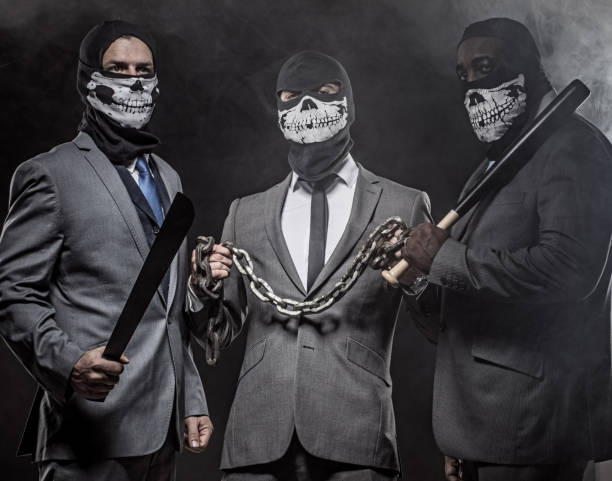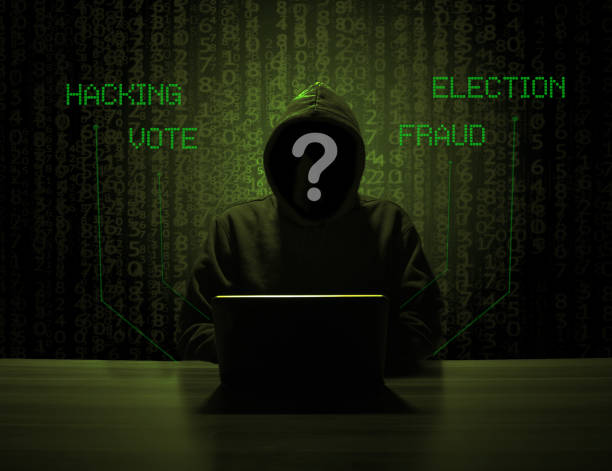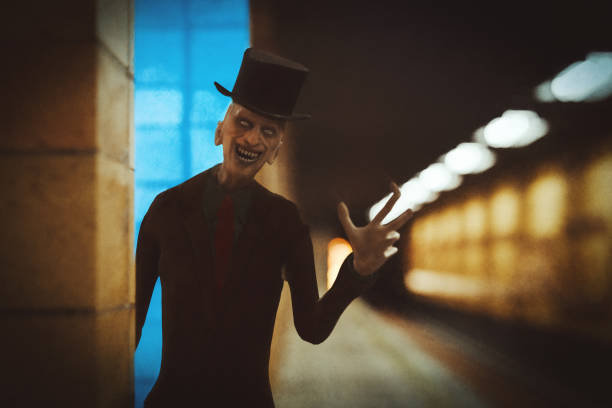How To Write A Complex Villain (15 Best Ways)
In the intricate tapestry of storytelling, the creation of a compelling and complex villain is an art form that transcends the boundaries of mere antagonism.
Crafting a villain with depth and nuance requires a delicate dance with the shadows, a journey into the labyrinth of their psyche where motivations, past traumas, and intricate character layers converge.
In this guide on “How To Write A Complex Villain,” we will explore the alchemy of storytelling that transforms a one-dimensional antagonist into a multidimensional force.
From establishing motivations and delving into the villain’s past to weaving in symbolism and navigating internal conflicts, this exploration seeks to illuminate the creative process behind crafting villains that resonate, challenge, and ultimately enrich the narrative landscape.
So, let’s embark on a journey where the lines between heroism and villainy blur, and the enigma of the antagonist becomes a focal point of storytelling brilliance.
How To Write A Complex Villain
Creating a complex villain involves several steps to ensure depth and authenticity. Here’s a step-by-step process:
Define Motivation and Goals
Determine the villain’s overarching goal and motivation. Consider personal desires, fears, or past traumas that drive their actions.
Develop Backstory
Create a detailed backstory that explains the villain’s origins and how they became who they are. Explore key life events, relationships, and turning points.
Flaws and Contradictions
Give the villain human flaws and contradictions to make them relatable. Show internal conflicts that add complexity to their character.
Unique Personality Traits
Develop distinct personality traits that set the villain apart. Consider quirks, habits, or idiosyncrasies that make them memorable.
Moral Ambiguity
Introduce moral ambiguity by showcasing the villain’s justifications for their actions. Explore a gray area where some may sympathize with their motives.
Complex Relationships
Build intricate relationships with other characters, both allies and adversaries. Show how these relationships influence the villain’s decisions.
Physical and Psychological Layers
Describe the villain’s physical attributes and abilities. Explore their psychological state, fears, and vulnerabilities.
Symbolism and Motifs
Use symbolism and recurring motifs to deepen the character’s thematic significance. Connect the villain’s actions to broader themes in the story.
Evolution Over Time
Allow the villain to evolve throughout the narrative. Show changes in their beliefs, goals, or methods based on experiences.
Antagonist’s Perspective
Occasionally present the story from the villain’s perspective to offer insight into their mindset. Help the audience understand their viewpoint without necessarily condoning their actions.
Challenging Morality
Pose moral dilemmas that force the audience to question their stance on the villain. Challenge the traditional hero-villain dichotomy.
Foils and Mirrors
Introduce foils (characters with contrasting traits) and mirrors (characters with similar traits) to emphasize different aspects of the villain’s character.
Speech and Dialogue
Craft compelling dialogue that reveals aspects of the villain’s personality. Use their words to convey motives, fears, or philosophical beliefs.
Visual Representation
If applicable (e.g., in visual media), design a distinctive visual appearance that reflects the character’s nature.\
Consistent Behavior
Ensure the villain’s actions and decisions align with their established character traits. Maintain consistency to enhance believability.
By following these steps, you can create a complex villain that adds depth and richness to your narrative.
Establishing Motivations
In the intricate tapestry of storytelling, establishing motivations for a character, particularly a villain, is akin to unlocking a hidden vault of secrets within the narrative.
It’s not merely about painting a canvas with broad strokes of good and evil but delving into the labyrinth of desires that propels a character forward.
Motivations are the heartbeat of a character’s existence, pulsating with the rhythm of past traumas, unquenchable aspirations, and the relentless pursuit of purpose.
It’s the alchemy that transforms a one-dimensional antagonist into a multidimensional force, challenging both the characters within the tale and the perceptions of those who dare to peer into the looking glass of storytelling mastery.
The revelation of motivations is the moment when shadows cease to be mere silhouettes and emerge as living, breathing entities, forcing the audience to question not only the character’s choices but the very fabric of their own moral compass.
The driving force behind the villain’s actions
At the heart of every villain’s saga lies the enigmatic driving force, a relentless current that propels their actions like a malevolent tide.
This force, often born from a crucible of past traumas and unmet desires, becomes the pulse that orchestrates the villain’s every move.
It is the siren song echoing through the corridors of their consciousness, a haunting melody that drowns out reason and morality.
Whether fueled by a burning vendetta, a desperate thirst for power, or the lingering echoes of personal injustices, the driving force is the catalyst that transforms an ordinary antagonist into a formidable, complex foe.
Unraveling this intricate tapestry of motivations unveils not only the villain’s inner demons but also serves as a mirror reflecting the universal struggles of human nature, inviting readers or viewers to confront the shadows lurking within themselves.
Past traumas and experiences
The haunting specters of past traumas and experiences weave an intricate web around a villain’s character, shaping them in ways both profound and profound.
These lingering shadows, like tattered pages from a forsaken diary, hold the key to understanding the genesis of the antagonist’s malevolence.
Whether rooted in the scars of a turbulent childhood, the sting of betrayal, or the searing aftermath of personal tragedy, these traumas become the crucible in which the villain’s identity is forged.
Each painful recollection, etched in the recesses of their psyche, serves as a visceral reminder of a time when innocence was lost, trust shattered, or dreams extinguished.
Unraveling the layers of past traumas not only humanizes the antagonist but also provides a poignant lens through which readers or viewers can empathize with the fractured fragments of their existence, challenging preconceived notions of morality and evoking a profound reflection on the enduring impact of the human experience.
Developing a Compelling Backstory
A character’s backstory is the narrative elixir that transforms a mere existence into a rich tapestry of intrigue, and when it comes to crafting a compelling villain, this narrative alchemy takes center stage.
It’s not merely about revealing the past; it’s about unlocking a Pandora’s box of secrets, allowing the tendrils of history to snake through the corridors of the present.
A villain’s backstory is a chiaroscuro of pivotal life events, each stroke of darkness and light contributing to the complex chiaroscuro of their character.
It’s the haunting melody of influential relationships and the resonating echoes of moral crossroads that reverberate through the chambers of their existence.
This backstory is not a mere footnote; it is the symphony that shapes their every malevolent crescendo, inviting the audience to traverse the labyrinth of their past, unearthing buried secrets and unraveling the enigmatic threads that bind the present to the ghosts of yesteryears.
Unraveling the layers of the villain’s past
Unraveling the layers of a villain’s past is akin to navigating a complex tapestry, each thread a delicate revelation that peels back the veneer of malevolence to expose the intricate fibers of their history.
It’s a literary excavation, where the archaeology of the antagonist’s past becomes a narrative dig, unearthing buried truths and hidden motivations.
Layer by layer, the audience is drawn into the labyrinth of pivotal life events, witnessing the crucibles that forged the villain’s identity.
These layers are not mere chronological anecdotes; they are the building blocks of a character’s soul, woven together with the silk of significant relationships, the rough linen of moral dilemmas, and the gossamer threads of personal tragedies.
Unraveling these layers serves not only to illuminate the shadows of the villain’s past but also to forge a connection between audience and antagonist, transforming the narrative from a simple conflict between good and evil into a compelling exploration of the human experience.
Key life events that shaped their character
The contours of a villain’s character are etched by the chisel of key life events, shaping them into the formidable and complex figure that stands on the stage of storytelling.
These events are not mere milestones; they are seismic tremors that reverberate through the very foundation of the antagonist’s existence.
Whether it be a profound loss that cast a pallor over their world, a betrayal that twisted the knife of trust, or a transformative moment that sparked the embers of malevolence, these key life events act as the architects of the villain’s narrative.
Each event is a chapter in a sinister biography, crafting the villain’s responses, motivations, and worldview. Unveiling these pivotal moments is like deciphering a cryptic code, unlocking the secrets behind the mask of villainy and revealing the intricate mosaic of their character, one shattered piece at a time.
Creating Moral Ambiguity
In the kaleidoscope of storytelling, creating moral ambiguity for a villain is akin to casting shadows upon the canvas of certainty.
It’s a deliberate dance with shades of gray, where the stark dichotomy of right and wrong blurs into a nuanced chiaroscuro.
The artistry lies in not justifying malevolence but in challenging the very essence of morality, leaving the audience teetering on the precipice of empathy and condemnation.
A morally ambiguous villain is a narrative riddle, an enigma wrapped in layers of complexity, where their actions are not dictated by a simple allegiance to darkness but rather by a dance with the twilight realms of human nature.
It’s an invitation to question the foundations of righteousness, an exploration of the twilight zones where virtue and vice intermingle, forcing the audience to confront the uncomfortable reality that within the villain’s heart may beat echoes of relatable human frailty.
Challenging traditional notions of good and evil
Challenging traditional notions of good and evil within the realm of villainy is akin to subverting the very foundations upon which moral certainties stand.
It’s an audacious narrative tightrope walk that defies the black-and-white dichotomy, embracing instead the kaleidoscope of moral ambiguity.
The villain, when portrayed as a complex entity navigating the gray areas of morality, becomes a literary disruptor, dismantling the simplistic tropes that often govern storytelling.
This creative rebellion prompts audiences to question ingrained beliefs, inviting them to traverse the uncharted territories where the villain’s motivations become more than just a dark mirror to the hero’s virtues.
In this narrative rebellion, the dichotomy of good and evil unravels, giving rise to a more profound exploration of the human psyche and challenging readers or viewers to reevaluate their own preconceptions about morality.
Justifying the villain’s actions from their perspective
Justifying the villain’s actions from their perspective is an exercise in narrative empathy, a daring plunge into the labyrinth of motives that renders shades of gray to their ostensibly malevolent deeds.
It involves peeling back the layers of their psyche, revealing the intricate tapestry of experiences and beliefs that have shaped their worldview.
From the villain’s lens, their actions cease to be arbitrary malevolence but emerge as calculated responses to a twisted set of circumstances.
It’s an opportunity for the audience to witness the world through a distorted looking glass, where what may seem heinous becomes, in the villain’s narrative, a desperate quest for justice, revenge, or even survival.
Justifying their actions is not an endorsement but a provocative exploration of the fine line that separates heroism from villainy, challenging the audience to confront the uncomfortable reality that in a different light, they might comprehend, if not condone, the motives behind the darkness.
Crafting Psychological Depth
Crafting psychological depth for a character, especially a villain, is like excavating the uncharted recesses of the human mind and laying bare the labyrinthine corridors of the soul.
It’s not just about giving the character a laundry list of quirks or disorders but about delving into the shadowy realms where fears, desires, and twisted perceptions converge.
The villain’s psyche becomes a Pandora’s box, revealing not only the demons that haunt them but the fractured pieces of their humanity.
It’s the exploration of psychological fault lines, where the line between sanity and madness blurs, and the symphony of their thoughts orchestrates a malevolent melody.
Crafting psychological depth is an invitation to dance with the ghosts that whisper in the villain’s mind, a kaleidoscopic journey that transforms them from a two-dimensional antagonist into a phantasmagoric exploration of the darkest corners of the human condition.
Analyzing the villain’s psyche
Analyzing the villain’s psyche is akin to unraveling a complex tapestry woven with the threads of intricate emotions, motivations, and inner turmoil.
It requires a psychological spelunking expedition into the depths of their consciousness, where the shadows of past traumas and twisted beliefs intertwine.
The villain’s psyche is a labyrinthine landscape, filled with echoing chambers of unresolved conflicts and haunting whispers of desires that dance on the precipice of malevolence.
It’s about peeling away the layers, understanding the genesis of their fears and the warped logic that propels their actions.
In this exploration, one confronts not just a nefarious antagonist but a mirror reflecting the frailties and vulnerabilities inherent in the human psyche.
Analyzing the villain’s psyche is an intellectual excavation that transforms the narrative from a mere clash of forces into a compelling psychological odyssey, challenging both the characters within the story and the audience to confront the complexities that lie beneath the surface of villainy.
Complex emotions and internal conflicts
Within the tumultuous landscape of a villain’s character, complex emotions and internal conflicts unfurl like a tempest, rendering them not a monolith of malevolence but a kaleidoscope of conflicting sentiments.
These emotions are a chiaroscuro of light and darkness, where love mingles with resentment, and ambition clashes with doubt.
The internal conflicts that simmer within the villain’s soul create a narrative tension that transcends the typical dichotomy of good versus evil.
It’s the battle between redemption and irredeemability, the yearning for connection versus the allure of isolation.
The complexity of emotions not only humanizes the antagonist but also fosters an intricate dance of sympathy and repulsion within the audience.
In exploring these internal conflicts, the narrative transforms into a psychological labyrinth, compelling readers or viewers to navigate the intricate maze of the villain’s heart, where the emotional chiaroscuro reveals the profound intricacies of their character.
Designing a Unique Personality
Designing a unique personality for a character, especially a villain, is akin to sculpting an avant-garde masterpiece from the raw clay of imagination.
It’s more than just giving them a set of quirks; it’s about concocting a cocktail of idiosyncrasies that defy predictability.
A truly unique villain doesn’t just follow the well-trodden paths of malevolence; they pirouette on the fringes of peculiarity.
It involves infusing their persona with a flavor that tantalizes the senses — be it a sardonic wit that cuts like a blade or a peculiar penchant for the esoteric.
The design process is a dance with the unexpected, a daring plunge into the abyss of creative unpredictability. Crafting a unique personality for a villain is not merely a task; it’s a rebellion against the mundane, a brushstroke of eccentricity that transforms the character into a living, breathing enigma, leaving an indelible mark on the canvas of storytelling.
Avoiding clichés and stereotypes
In the realm of character creation, steering clear of clichés and stereotypes is the beacon guiding the narrative ship through uncharted waters.
Crafting a compelling villain demands a departure from the well-trodden paths of predictability, an intentional rebellion against the mundane.
Avoiding clichés is about more than just evading worn-out tropes; it’s an artistic endeavor to unearth the unexpected, to defy the gravitational pull of storytelling conventions.
A truly original villain refuses to be pigeonholed into familiar archetypes; instead, they emerge as a mosaic of complexity, challenging preconceived notions and evoking a sense of narrative wonder.
It’s a commitment to innovation, an invitation for both the creator and the audience to venture beyond the safety of the known into the unexplored territories where storytelling brilliance awaits.
Incorporating quirks and idiosyncrasies
Incorporating quirks and idiosyncrasies into a character’s makeup is the alchemical process that transforms them from two-dimensional cutouts into vibrant, memorable entities.
For a villain, it’s about infusing their malevolence with a dash of the unexpected, like adding rare spices to a culinary masterpiece.
These quirks are the fingerprints of uniqueness, the irregularities that make the character stand out amidst a sea of mediocrity.
Whether it’s a penchant for collecting peculiar artifacts or an oddly endearing ritual before committing sinister deeds, these idiosyncrasies offer a window into the eccentric depths of the character’s psyche.
They humanize the villain, making them not just an agent of darkness but a dynamic, unpredictable force that defies conventional molds.
Incorporating quirks and idiosyncrasies is the secret sauce that elevates a character from forgettable to iconic, leaving an indelible mark on the narrative landscape.
Establishing a Code of Ethics
Establishing a code of ethics for a villain is akin to painting shadows on a canvas of malevolence, where the murky lines between right and wrong become a chiaroscuro of moral ambiguity.
It’s not about adhering to conventional notions of virtue but about crafting a set of principles that shape the contours of the antagonist’s dark journey.
This ethical code is the villain’s North Star, guiding them through the treacherous terrain of their nefarious endeavors.
Whether it’s an unsettling sense of loyalty, a twisted honor code, or a peculiar set of rules governing their malevolent pursuits, the establishment of this ethical compass adds layers of complexity to their character.
In doing so, it challenges the audience to confront the uncomfortable reality that even within the depths of villainy, there exists a semblance of order—a code that both binds and distinguishes them in the vast expanse of narrative chaos.
Defining the rules the villain lives by
Defining the rules that govern a villain’s existence is akin to etching a sinister constitution into the fabric of their malevolent reality.
It’s not merely a list of do’s and don’ts but an intricate tapestry of principles that shapes the very essence of their character.
These rules are the macabre commandments that guide the villain’s dark journey, providing a twisted moral compass in the chaotic landscape of their nefarious pursuits.
Whether rooted in a skewed sense of justice, a relentless pursuit of power, or a chilling moral relativism, these defined rules become the scaffolding upon which the villain constructs their narrative identity.
By delineating the boundaries that the antagonist refuses to cross or the thresholds they eagerly breach, the rules serve not only to establish the villain’s ethos but also to provoke introspection among the audience, urging them to ponder the complexities that arise when malevolence follows its own code.
Personal moral code
A villain’s personal moral code is the sinister manifesto that navigates the treacherous waters of their malevolent intent.
It’s not a conventional set of ethical guidelines but a shadowy labyrinth of principles that define the boundaries between right and wrong within the villain’s skewed worldview.
This moral code becomes the rudder steering the antagonist through the tumultuous narrative seascape, dictating the rules by which they justify their dark actions.
Whether founded on a twisted sense of justice, a ruthless survival instinct, or an unrestrained pursuit of ambition, the personal moral code shapes the villain’s character into a multi-faceted, morally ambiguous entity.
It transforms the narrative into a dance with morality’s shadows, challenging both the characters within the story and the audience to grapple with the unsettling notion that even malevolence can adhere to a code of its own making.
Implementing Foils and Conflicts
In the intricate dance of storytelling, implementing foils and conflicts for a villain is like orchestrating a symphony of narrative discord.
Foils are the clandestine dance partners that accentuate the villain’s malevolence, casting shadows that amplify their darkness.
These conflicts are not mere plot devices but seismic tremors that reverberate through the very core of the antagonist’s identity.
It’s the clash of ideals with a hero, the discord within their own nefarious network, and the tumultuous relationships that paint the canvas of their complexity.
Like an artist wielding contrasting hues, implementing foils and conflicts transforms the villain into a dynamic force, where the resonance of these narrative collisions adds layers of intrigue.
It’s an invitation for the audience to witness the sparks that fly when the villain’s malevolent melody encounters the dissonance of conflicting forces, creating a symphony of storytelling brilliance that transcends the ordinary.
Relationships with other characters
A villain’s relationships with other characters are the intricate threads that weave the tapestry of their narrative existence.
Beyond the overt clashes with heroes, these relationships delve into the subtler nuances of human connection within the realm of malevolence.
Whether forged in alliances shrouded in deceit, alliances tainted by mutual interest, or bitter enmities with rivals, these connections reveal the dynamic interplay between the antagonist and the supporting cast.
The quality of these relationships transforms the villain from a one-dimensional malefactor into a multi-faceted entity, illustrating the various facets of their character.
It’s in these connections that the true depth of the villain’s persona is unveiled — be it the manipulation of minions, the complexities of a twisted friendship, or the bitter taste of betrayal.
Exploring these relationships adds layers to the narrative, making the villain not just a solitary force of darkness but a complex individual shaped by the interwoven dynamics of their connections.
Tension with allies and enemies
Tension with allies and enemies is the electrifying undercurrent that courses through the veins of a villain’s narrative journey, akin to the crackle of storm clouds on the horizon.
The alliances forged in the crucible of malevolence are not built on trust but on shared objectives and uneasy partnerships, each ally a potential betrayer and each enemy a looming threat.
The tension with allies simmers beneath the surface, a volatile concoction of conflicting interests and clandestine motives.
Conversely, the enmity with adversaries is the crucible in which the villain’s mettle is tested, a continuous game of cat and mouse that fuels the narrative engine.
It’s a dance of deception and power dynamics, where alliances are fragile alliances, and enemies are opportunistic foes waiting for a chance to strike.
This tension, whether bubbling beneath a false camaraderie or erupting in open conflict, becomes the heartbeat of the villain’s story, propelling them forward in a maelstrom of suspense and unpredictability.
Allowing Room for Redemption
In the labyrinth of villainy, allowing room for redemption is akin to unlocking a hidden door to an alternate narrative universe.
It’s a narrative gamble that transforms the antagonist from a stagnant force of malevolence into a dynamic character on the precipice of transformation.
Redemption becomes the elusive phoenix rising from the ashes of their darkest deeds, challenging both the characters within the story and the audience to believe in the possibility of salvation even in the most shadowy corners of villainous hearts.
It’s an invitation to witness the dance between remorse and absolution, where the villain grapples with the echoes of their own conscience amid the cacophony of sin.
Allowing room for redemption is not an easy path but a courageous narrative choice, birthing a tale that transcends the conventional boundaries of heroism and villainy, ultimately asking whether redemption can bloom even in the most desolate soil of malevolence.
Providing opportunities for growth and change
Providing opportunities for growth and change within a villain’s arc is akin to planting seeds of transformation in the fertile soil of narrative possibility.
It’s a dynamic journey where the antagonist, once rooted in the soil of malevolence, is granted the chance to evolve beyond the confines of their dark origins.
These opportunities are the tender shoots that emerge from the cracks in the villain’s stony exterior, inviting them to explore paths divergent from their predestined course.
Whether spurred by unexpected alliances, moments of self-reflection, or external influences that challenge their worldview, these opportunities catalyze a metamorphosis that transcends the simplistic dichotomy of good and evil.
It’s a nuanced narrative dance that allows the villain to grapple with their own demons and, in doing so, beckons the audience to ponder the transformative power inherent in the most unlikely of narrative arcs.
Moments of self-reflection
Moments of self-reflection for a villain are like mirrors positioned strategically within the labyrinth of their malevolent journey, offering glimpses into the shadowy recesses of their own psyche.
These reflective interludes become the narrative windows where the antagonist confronts the twisted tapestry of their past, the motivations that drive them, and the consequences of their nefarious deeds.
It’s a psychological pause in the relentless march of villainy, allowing the character to grapple with the echoes of their own choices and the haunting specters of their moral landscape.
In these moments, the villain ceases to be a mere agent of darkness; they become a complex, introspective entity, navigating the complex terrain between remorse and defiance.
The narrative transforms into a chiaroscuro of introspection, urging both the character and the audience to confront the turbulent depths of the human soul within the context of malevolence.
Creating Symbolic Imagery
Creating symbolic imagery for a character, especially a villain, is akin to wielding a brush dipped in shadows and echoes.
It transcends the visual aesthetics, becoming a linguistic dance where every symbol, every motif, is a brushstroke that paints the very essence of their malevolence.
It’s not merely about the visual spectacle; it’s a subtle language that speaks to the subconscious, a secret code etched into the narrative fabric.
Whether it’s the haunting silhouette that mirrors the villain’s inner turmoil, the recurring motif that whispers of their relentless pursuit, or the symbolic imagery that transcends the visual realm, each element becomes a narrative glyph, inviting the audience to decipher the hidden meanings beneath the surface.
Creating symbolic imagery isn’t just an artistic flourish; it’s a method of storytelling alchemy that transforms the character into a living, breathing enigma, a symphony of symbols that resonate in the minds of the audience long after the final curtain falls.
Utilizing symbols and motifs associated with the villain
Utilizing symbols and motifs associated with a villain is akin to planting enigmatic seeds throughout the narrative, each one a cipher that unravels the labyrinthine layers of their character.
These symbols are not mere aesthetic ornaments but subtle heralds of the antagonist’s essence, resonating with a thematic cadence that echoes their malevolent symphony.
Whether it’s a recurring emblem that mirrors the shadows of their past or a symbolic motif that encapsulates the driving force behind their deeds, these narrative devices become the breadcrumbs leading the audience deeper into the villain’s psyche.
The symbols serve as a visual and thematic shorthand, inviting the audience to decode the underlying complexities and motivations that defy the superficiality of villainy.
In this symphony of symbols, every visual cue becomes a narrative refrain, an invitation for the audience to navigate the dark corridors of the character’s soul and unlock the mysteries concealed within the visual tapestry of their malevolence.
Visual representations
Visual representations of a villain are the evocative brushstrokes that paint the very essence of their character onto the canvas of storytelling.
Beyond the mere physicality, these representations delve into the subtleties and nuances that reveal the core of the antagonist’s identity.
From the ominous silhouette that looms like a specter to the telling scars that narrate a history of conflict, every visual detail becomes a narrative element, offering insights into the complexities of the villain’s journey.
It’s in the piercing gaze that hints at hidden motives and the subtle quirks that defy conventional aesthetics that the character truly comes alive.
These visual representations serve as a visual lexicon, an invitation for the audience to decipher the symbolic language etched into the very fabric of the villain’s persona, fostering a connection that goes beyond the superficial, allowing for a profound exploration of the character’s visual and narrative depths.
Frequently Asked Questions about How To Write A Complex Villain
What are the key elements to consider when developing the motivation and goals of a complex villain?
When crafting a complex villain, it’s crucial to define their overarching goal and motivation. Delve into personal desires, fears, or past traumas that propel their actions, giving them a compelling purpose that goes beyond mere antagonism.
How can I make a villain’s backstory more engaging and layered?
To create a captivating backstory, focus on detailing the villain’s origins and the events that shaped them. Explore key life experiences, relationships, and pivotal moments, providing a rich narrative tapestry that explains how they evolved into the complex character they are.
What role do flaws and contradictions play in making a villain more relatable?
Flaws and contradictions humanize a villain, making them relatable and multidimensional. By showcasing internal conflicts and imperfections, you add depth to their character, allowing the audience to connect with their struggles on a more personal level.
How do unique personality traits contribute to a memorable villain?
Distinct personality traits make a villain memorable. Consider quirks, habits, or idiosyncrasies that set them apart. These traits not only define the character but also leave a lasting impression on the audience.
Why is moral ambiguity important in crafting a complex villain?
Introducing moral ambiguity adds layers to a villain’s character by exploring the justifications behind their actions. This gray area prompts the audience to question traditional notions of good and evil, fostering a deeper understanding of the character’s motives.
In what ways can complex relationships enhance a villain’s character?
Complex relationships with other characters, both allies and adversaries, provide insight into the villain’s motivations. These connections influence their decisions and actions, adding nuance to their character and contributing to the overall depth of the narrative.
How can I effectively portray the physical and psychological aspects of a complex villain?
Describe the villain’s physical attributes and abilities, but don’t neglect their psychological state. Explore fears, vulnerabilities, and mental struggles to create a well-rounded character with both external and internal dimensions.
What role do symbolism and motifs play in developing a complex villain?
Symbolism and recurring motifs can deepen the thematic significance of a villain. Connect their actions to broader themes in the story, using symbolism to convey layers of meaning and evoke thought-provoking interpretations.
How can I ensure consistency in a complex villain’s character throughout the narrative?
Maintain consistency by aligning the villain’s actions and decisions with their established character traits. This ensures believability and reinforces the complexity you’ve built, preventing inconsistencies that may undermine the depth of the character.
Why is it important to occasionally present the story from the villain’s perspective?
Offering the audience the villain’s perspective provides insight into their mindset. This narrative choice helps humanize the character, fostering understanding without necessarily condoning their actions. It adds a layer of complexity by challenging the traditional hero-villain narrative dichotomy.
Conclusion
In conclusion, crafting a complex villain is a meticulous process that involves a thoughtful exploration of various elements.
From defining motivations and goals to weaving intricate backstories and relationships, each step contributes to the depth and authenticity of the character.
Introducing flaws, contradictions, and moral ambiguity humanizes the villain, making them relatable and challenging traditional notions of good and evil.
The use of unique personality traits, physical and psychological layers, as well as symbolism and motifs, adds richness to the character’s narrative tapestry.
By allowing the villain to evolve over time and presenting the story from their perspective, writers create a multidimensional antagonist that engages the audience on intellectual and emotional levels.
Consistency in character portrayal is key to maintaining believability and reinforcing the complexity established.
In essence, a well-crafted complex villain transcends the role of a mere adversary, becoming a pivotal and memorable component of the narrative.
As writers navigate the intricacies of villain creation, they unlock opportunities to explore themes, challenge moral perspectives, and elevate their storytelling to new heights.
Ultimately, a compelling villain not only enhances the overall narrative but also prompts audiences to ponder the shades of grey that exist within the realm of characters and morality.









